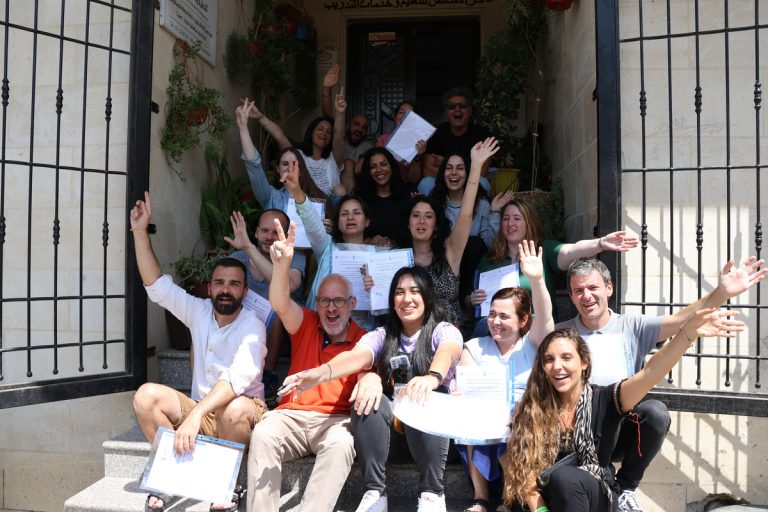Levantine Arabic (“Ammiyya”), known in Arabic as اللّهجة الشّامية (al-Lahja ash-Shāmiyya), is one of the most widely spoken dialects of Arabic in the Eastern Mediterranean. Encompassing the sub-dialects of Syria, Lebanon, Palestine, and Jordan, it forms a distinct linguistic branch within the Central Semitic family. While it is primarily used in everyday conversation, Levantine Arabic is rarely written or used in formal contexts, where Modern Standard Arabic (MSA) is preferred.
This dialect is deeply rooted in the region’s culture and history, shaped by centuries of interaction with languages like Turkish, French, English, Kurdish, Aramaic, and Hebrew. With over 40 million speakers across the Levant and its global diaspora, Levantine Arabic plays a vital role in music, film, social media, and daily communication, serving as a living, evolving expression of Levantine identity.
Table of Contents
Essential Facts About Levantine Arabic
| Category | Details |
|---|---|
| Name | Levantine Arabic (اللّهجة الشّامية – al-Lahja ash-Shāmiyya) |
| Sub-Dialects | Syrian, Lebanese, Palestinian, Jordanian |
| Language Family | Semitic → Central Semitic → Arabic → Levantine Arabic |
| Region Spoken | Spoken in everyday life, not typically used in formal writing or media |
| Number of Speakers | Syria, Lebanon, Palestine, Jordan, parts of Israel, and the Levantine diaspora worldwide |
| Status | Common in TV, films, music, and informal media, MSA is used for formal contexts |
| Relation to MSA | Shares grammar roots but differs in pronunciation, vocabulary, and usage |
| Influences | Turkish, French, English, Kurdish, Aramaic, Hebrew, among others |
| Written Form | Rarely used in writing; appears informally in texts, chats, and social media |
| Media Usage | Common in TV, films, music, and informal media, MSA is used for formal contexts |
| Mutual Intelligibility | High among Levantine sub-dialects, with some regional variation |
Who Speaks Levantine Arabic?
Levantine Arabic is spoken by over 40 million people across the Levant region, which includes Syria, Lebanon, Jordan, Palestine, and parts of Israel. It is the native dialect of people in major cities such as Damascus, Beirut, Amman, and Jerusalem, as well as in surrounding rural areas and villages.
In addition to native speakers in the Middle East, millions of Levantine Arabic speakers live abroad due to migration, study, work, or displacement. Significant diaspora communities exist in Europe, North America, South America, and the Gulf states. In these communities, Levantine Arabic continues to thrive, often blending with the local languages and cultures.
Despite regional variations in vocabulary and pronunciation, Levantine Arabic remains largely mutually intelligible across its sub-dialects, making it a practical and widely understood form of spoken Arabic in both the Middle East and the diaspora.
Differences Between Levantine Arabic and Modern Standard Arabic
Levantine Arabic and Modern Standard Arabic (MSA) differ significantly in usage, tone, and formality. MSA is a standardized, literary form of Arabic used in formal writing, news broadcasts, education, and official communication across the Arab world. It follows strict grammatical rules and is largely uniform across different countries. Levantine Arabic, on the other hand, is a colloquial dialect spoken in everyday life in countries such as Syria, Lebanon, Jordan, and Palestine. It is more flexible, fluid, and adapted to informal, conversational use.
One of the most notable differences between the two is pronunciation. In Levantine Arabic, certain consonants are softened or pronounced differently than in MSA. For example, the letter ق (qāf) is often pronounced as a glottal stop [ʔ] in urban Levantine speech, while in MSA, it retains its original deep [q] sound. Similarly, the letter ج (jīm) is often pronounced [ʒ] (like the “s” in “measure”) in Levantine, whereas MSA uses [dʒ] (as in “judge”). These differences in pronunciation give Levantine Arabic a more melodic and casual tone compared to the formal and classical sound of MSA.
Another key distinction lies in vocabulary and grammar. Levantine Arabic frequently incorporates words borrowed from Turkish, French, English, and other regional languages due to historical and cultural influences. It also simplifies many grammatical structures. For instance, the phrase “I want” is expressed as “biddi” in Levantine, while MSA uses the more complex form “urīdu.” Sentence structures in Levantine are often more flexible, allowing for varied word order, whereas MSA adheres more rigidly to formal syntax rules. This informality makes Levantine Arabic more accessible for daily communication, while MSA remains the language of literature, academia, and formal discourse.
Linguistic Features of Levantine Arabic
Levantine Arabic is characterized by its distinct phonological, grammatical, and lexical features that set it apart from both Modern Standard Arabic (MSA) and other Arabic dialects. One of the most notable phonetic traits is the softened pronunciation of certain consonants. For example, the letter ق (qāf) is often pronounced as a glottal stop [ʔ] in urban areas or as [k] in rural regions, and ج (jīm) is frequently pronounced as [ʒ], similar to the “s” in “measure.” This phonological shift gives Levantine Arabic a smoother, more melodic quality compared to the harsher sounds found in MSA or Gulf dialects.
In terms of grammar, Levantine Arabic tends to simplify structures found in MSA. It often omits case endings, uses shorter verb forms, and applies a more flexible sentence structure. For instance, negation is commonly formed by wrapping a sentence in “mā” and “-sh” (e.g., mā baʿrifsh – “I don’t know”), and the present tense is constructed with prefixes like b- (e.g., biktib – “he writes”). The dialect also embraces contractions and elisions that make it faster and easier to speak, especially in informal settings.
Lexically, Levantine Arabic is rich and dynamic, shaped by centuries of contact with other cultures and languages. Loanwords from Turkish, French, English, and even Aramaic are commonplace. For example, bonjūr (from French bonjour) and tilifōn (from English “telephone”) are frequently used. This blend of influences contributes to a flexible vocabulary that continues to evolve, especially in urban centers. As a result, Levantine Arabic is not only widely spoken and understood across national borders but also deeply tied to the cultural and social identity of the Levantine people.
How Can I Learn Levantine Arabic?
Levantine Arabic online and in-person courses are excellent starting points for anyone seeking their first exposure to the dialect. Several other valuable resources and programs support learners at all levels, whether through structured courses, online platforms, or immersive in-person experiences.
Here are a few recommended sources for learning Levantine Arabic:
1. Study Levantine Arabic Platform
Enroll in the Study Levantine Arabic‘ Intensive Levantine Arabic courses, which offer 20 hours of instruction per week. These courses allow students to quickly acquire Arabic skills and finish a full 80-hour course in just four weeks. Intensive options are offered in both Modern Standard Arabic and Palestinian Arabic (Ammiyya), Egyptian, and Levantine Arabic (Shami Dialect).
2. Study Arabic Online Courses
Study Arabic Online offers courses in Levantine Arabic (Ammiyya or Shami Arabic), which includes Palestinian, Jordanian, Syrian, Lebanese, and Egyptian dialects, as well as Modern Standard Arabic. Our programs are designed for beginners and focus on practical conversation and everyday vocabulary, making learning Arabic from the comfort of your home or workplace easy. Ready to learn Levantine Arabic? Join our engaging online lessons taught by experienced instructors from Palestine, Jordan, Lebanon, Egypt, and Syria. Whether you’re a student, a professional, or just passionate about Arabic, our classes are designed for everyone. You’ll learn to speak Arabic confidently and connect with people from Arabic-speaking countries.
3. The Excellence Center in Europe
The Excellence Center in Europe provides various Arabic language programs for individuals eager to learn Levantine Arabic while immersing themselves in Europe’s rich cultural diversity. Whether you’re a student aiming to strengthen your language skills, a professional seeking to enhance cross-cultural communication, or a language enthusiast exploring Arabic dialects, our programs offer an immersive and engaging learning experience.
4. Study Arabic World
Study Arabic World offers a range of intensive programs designed to immerse you in the rich linguistic tapestry of the Arabic language. Our courses cover Levantine, Palestinian, Jordanian, Syrian, Lebanese, and Egyptian Arabic dialects, along with Modern Standard Arabic. Crafted specifically for those with little to no Arabic proficiency, our programs aim to foster meaningful connections within local communities. Emphasizing practical conversations and everyday vocabulary, our curriculum facilitates easy and effective Arabic language learning, all from the comfort of your home or workplace.
5. Study Levantine Arabic Online Course
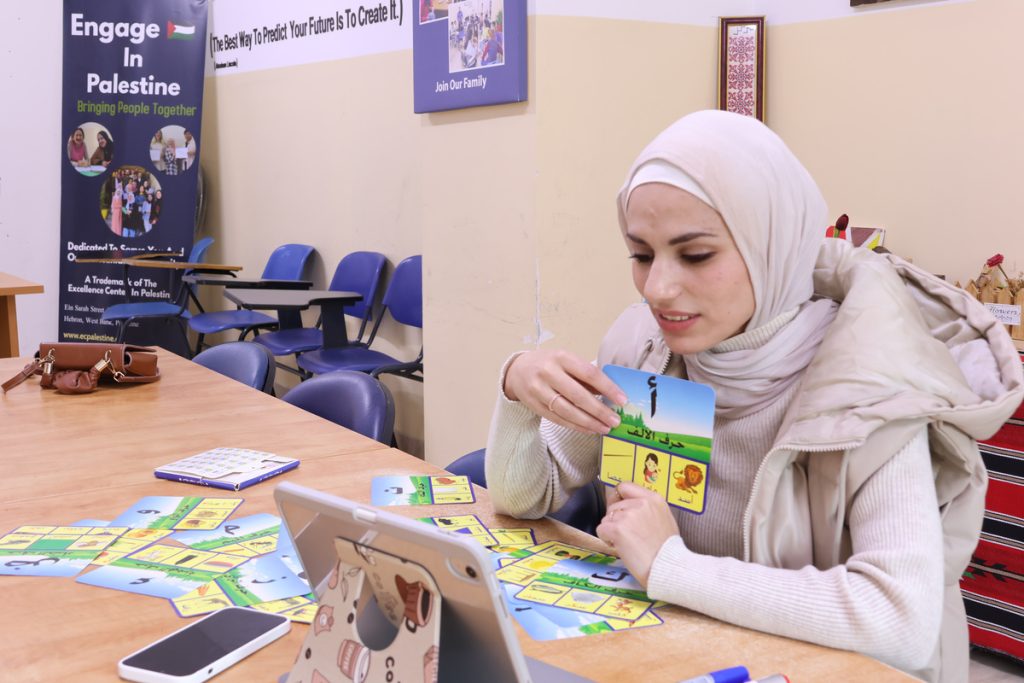
Studying Levantine Arabic Online: Levantine Arabic, also known as Shami Arabic or the Ammiyya dialect, is a fantastic option for those who want to learn this widely spoken and increasingly important dialect from the comfort of their home. Spoken by approximately 42 million people across Jordan, Palestine, Lebanon, and Syria, Levantine Arabic is a cornerstone of the Levant region and is easily understood throughout the broader Middle East and North Africa (MENA) region.
Additional Tips on Improving Levantine Arabic
A well-rounded approach to learning Levantine Arabic combines listening, speaking, reading, and cultural immersion. Consider the following strategies:
- Watch Levantine TV shows and films with subtitles to familiarize yourself with pronunciation and expressions.
- Use audio-based language apps or YouTube channels dedicated to Levantine Arabic.
- Engage in language exchange with native speakers via platforms like Tandem or HelloTalk.
- Take live classes (online or in-person) to get personalized instruction and practice speaking.
- Supplement with grammar books or phrasebooks focused on Levantine Arabic.
Top Places to Study Levantine Arabic for In-Person Lessons
If you want to deepen your understanding of Levantine Arabic, several excellent programs and institutions offer immersive and accessible learning experiences. From intensive in-person courses to flexible online platforms, these options cater to learners of all levels and provide valuable cultural insights alongside language instruction:
1. The Excellence Center in Palestine
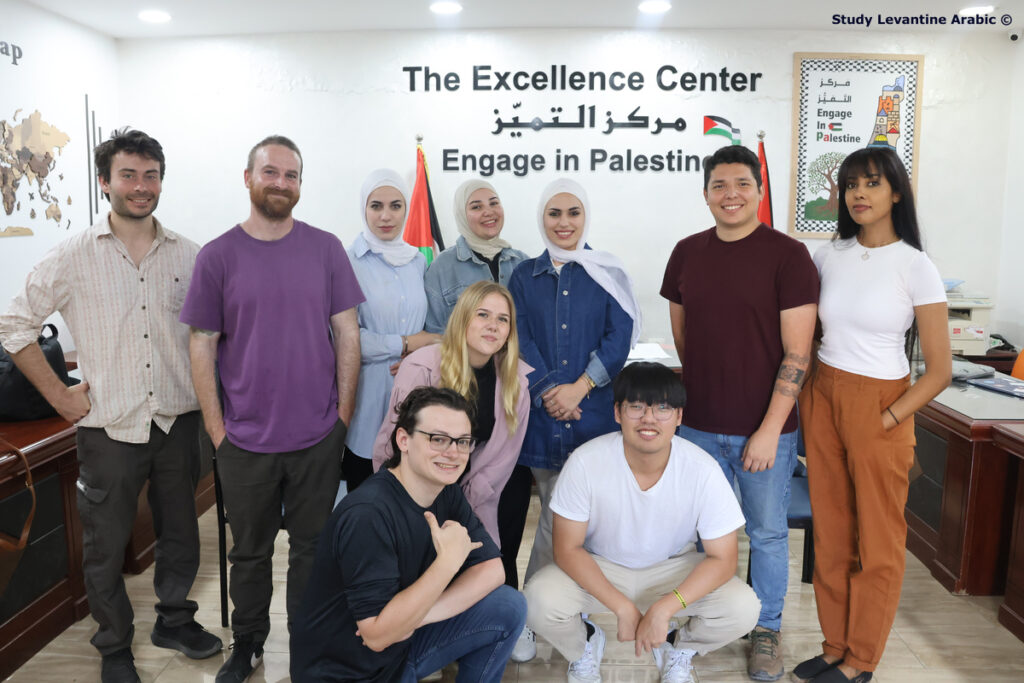
Study Levantine Arabic: Enroll in our top-tier language program and study Levantine Arabic at the Excellence Center! We are well known as one of the Levant’s best Arabic language schools. Our strategic location in Hebron (an affordable and bustling city in the West Bank) creates an ideal atmosphere to learn the Levantine “Ammiya” Arabic dialect (This dialect is spoken throughout Syria, Lebanon, Palestine, and Jordan).
2. The Excellence Center in Europe
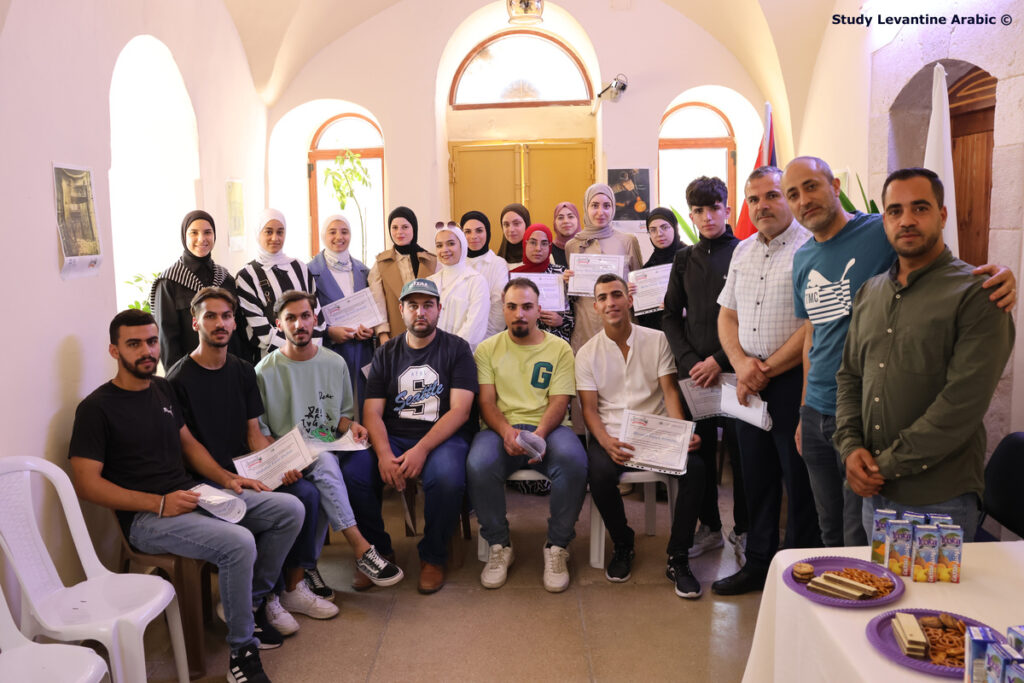
Study Levantine Arabic in Germany: Students can explore the language and culture of a diverse Arabic diaspora by choosing to study Levantine Arabic at the Excellence Center in Halle, Germany. The Excellence Center is a unique place where the German and Arabic languages and cultures converge. Many refugees, migrants, and asylum seekers live in Halle, creating a blend of cultures that demonstrates the utility of the Arabic language outside of the Middle East and North Africa.
3. Engage in Palestine
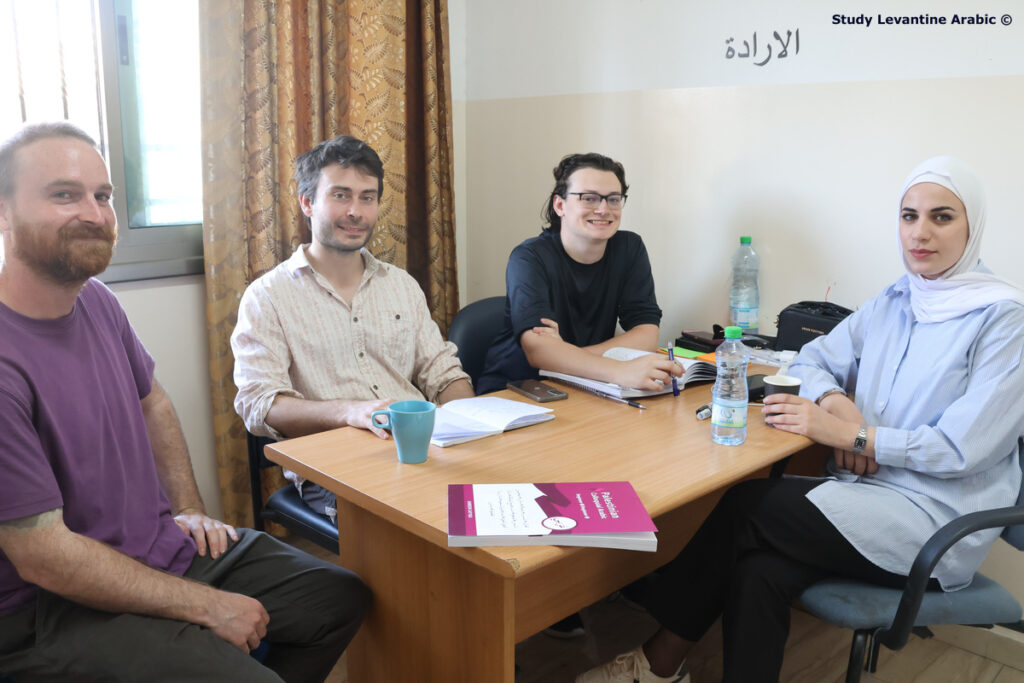
The Intensive Levantine Arabic Program, by Engage in Palestine, is an excellent opportunity for those wishing to learn the colloquial Palestinian dialect of Arabic, connect with the wider Palestinian diaspora, and immerse themselves in the diverse culture of Palestine and the greater Levant. Engage in the West Bank offers courses at four levels and three intensities, depending on your needs.
4. Study in Palestine
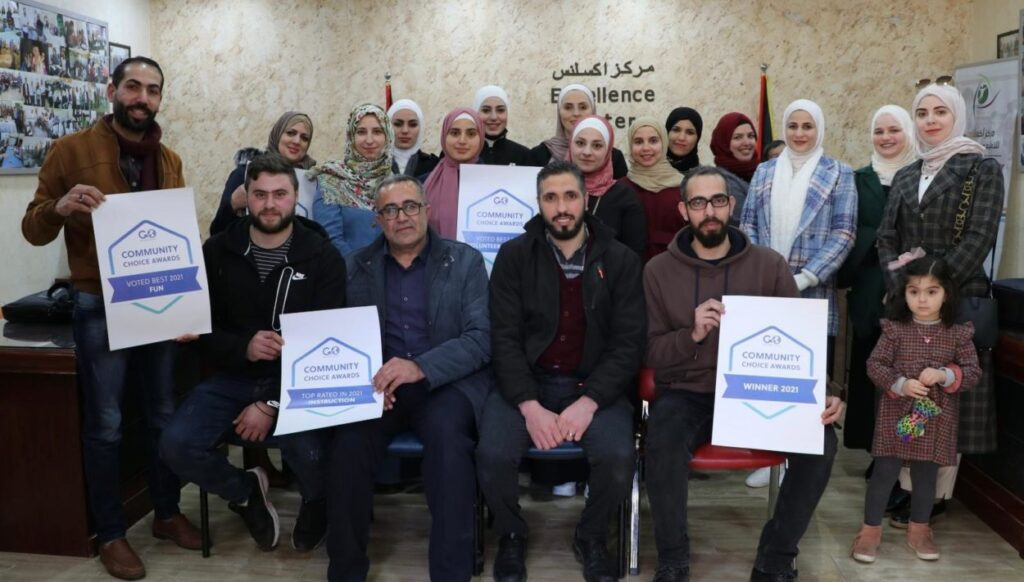
Join the premier Study in Palestine‘s language program to study Levantine Arabic at a top school in the bustling city of Hebron. Experience the ideal atmosphere for learning the Levantine dialect spoken in Syria, Lebanon, Palestine, and Jordan. Immerse yourself in the rich culture of Palestine and the Levant, and gain insight into the region’s history and current events while building meaningful relationships with the Palestinian community.
What are Some Common Levantine Arabic Expressions?
| Levantine Arabic | Meaning | English Equivalent |
|---|---|---|
| مرحبا (marḥabā) | Hello | Hi / Hello |
| كيفك؟ (kīfak? / kīfik?) | How are you? (male/female) | How are you? |
| تمام (tamām) | Fine / Great | I’m good / All good |
| شكراً (shukran) | Thank you | Thanks |
| عفواً (ʿafwan) | You’re welcome / Excuse me | You’re welcome / Pardon me |
| ماشي (māshi) | Okay / All right | Okay |
| يلا (yalla) | Let’s go / Hurry up | Come on / Let’s go |
| إن شاء الله (in shāʾ Allāh) | God willing / Hopefully | Hopefully |
| ما في مشكلة (mā fī mishkleh) | No problem | No worries |
| عنجد؟ (ʿan jad?) | Really? / Are you serious? | Seriously? |
| خلص (khalas) | Enough / Stop it / Done | That’s it / Stop |
| صحة (ṣaḥa) | Said after someone eats or drinks | Bon appétit / Bless you (context) |
| مبروك (mabrook) | Congratulations | Congrats |
| الله يعطيك العافية (Allāh yaʿṭīk al-ʿāfyeh) | May God give you health | Thanks for your hard work |
| تصبح على خير (tiṣbaḥ ʿalā khayr) | Good night | Sleep well / Good night |
Conclusion
Levantine Arabic, or al-Lahja ash-Shāmiyya, stands as a vibrant and essential thread in the cultural and linguistic fabric of the Middle East. Rooted in the daily lives of over 40 million speakers and shaped by a rich tapestry of historical influences, this dialect serves not only as a practical means of communication but also as a powerful expression of regional identity. While it differs significantly from Modern Standard Arabic in pronunciation, grammar, and usage, its accessibility and melodic quality make it a widely understood and adaptable form of Arabic across borders.
Whether through music, film, or conversation, Levantine Arabic continues to thrive both within the Levant and across global diasporas. For language learners and cultural enthusiasts alike, engaging with Levantine Arabic opens the door to deeper human connection, cultural understanding, and participation in the living traditions of one of the world’s oldest regions.
